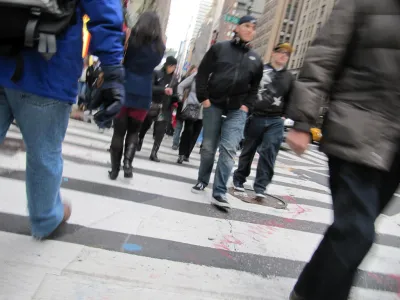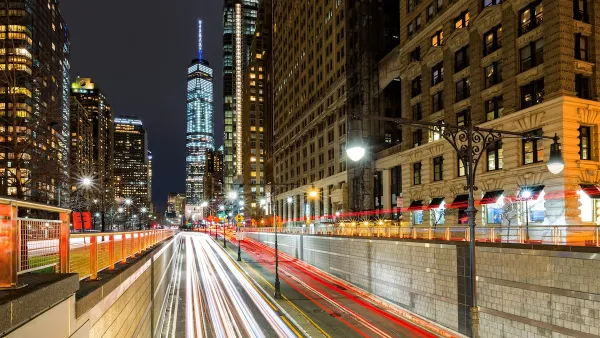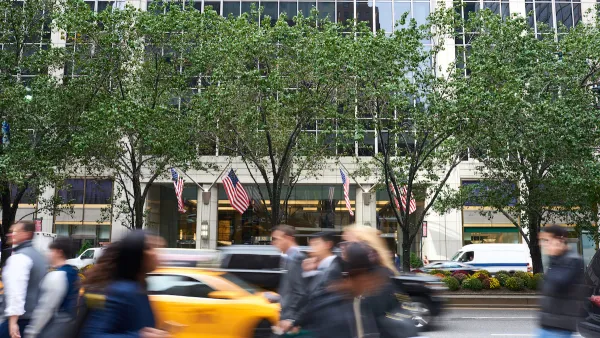Paris and New York City are two of the world's more successful pedestrian cities, with each boasting several kinds of data that show the predominance of alternative transportation. An article compares public space in each for lessons.

"In Paris, where I hail from, 60% of journeys are by foot - far beyond car trips (7%) – and 60% of Parisians do not own a car," writes Clémence Morlet, and in New York City, "53% of those who live and work in Manhattan never use a car, bus, subway or train in their everyday trips but instead walk, ride a bicycle or motorcycle, take a taxicab, or work at home."
Given the large population of pedestrians making use of the public spaces in these cities, Morlet asks, "How do they support this large pedestrian population and decrease auto-dominance in public space?"
In Paris, for instance, the Pedestrian Paris Initiative has been "shifting the focus from other modes of transportation to pedestrians." That includes clearing sidewalks of obstacles as well as widening sidewalks. Moreover, "The municipal government has also focused on creating a balance in the street between motorized vehicles, public transportation, bikes, and pedestrians, in part by implementing lower speed limit areas."
As for New York, according to Morlet, "New York City has implemented complete-streets roadway design that accommodates all users: pedestrians, people on bikes, and drivers," citing the New York City Department Transporttion efforts like the 2008 report World Class Streets: Remaking New York City’s Public Realm and the 2009 Street Design Manual. Among other case studies, Morlet examines the success of the 59 public plazas created by NYC DOT since 2007: "Post-project surveys show the plazas are mainly supported by New Yorkers (up to 72%) and 76% of New Yorkers live now within ten minutes of open space (up from 70 in 2007). Moreover, the improvements generally resulted in an increase in retail sales at locally-based businesses; like in Pearl Street in Brooklyn where local retail sales have increased by 172%, compared to 18% borough-wide."
FULL STORY: Shared Space and Slow Zones: Comparing Public Space in Paris and New York

Analysis: Cybertruck Fatality Rate Far Exceeds That of Ford Pinto
The Tesla Cybertruck was recalled seven times last year.

National Parks Layoffs Will Cause Communities to Lose Billions
Thousands of essential park workers were laid off this week, just before the busy spring break season.

Retro-silient?: America’s First “Eco-burb,” The Woodlands Turns 50
A master-planned community north of Houston offers lessons on green infrastructure and resilient design, but falls short of its founder’s lofty affordability and walkability goals.

Test News Post 1
This is a summary

Analysis: Cybertruck Fatality Rate Far Exceeds That of Ford Pinto
The Tesla Cybertruck was recalled seven times last year.

Test News Headline 46
Test for the image on the front page.
Urban Design for Planners 1: Software Tools
This six-course series explores essential urban design concepts using open source software and equips planners with the tools they need to participate fully in the urban design process.
Planning for Universal Design
Learn the tools for implementing Universal Design in planning regulations.
EMC Planning Group, Inc.
Planetizen
Planetizen
Mpact (formerly Rail~Volution)
Great Falls Development Authority, Inc.
HUDs Office of Policy Development and Research
NYU Wagner Graduate School of Public Service



























